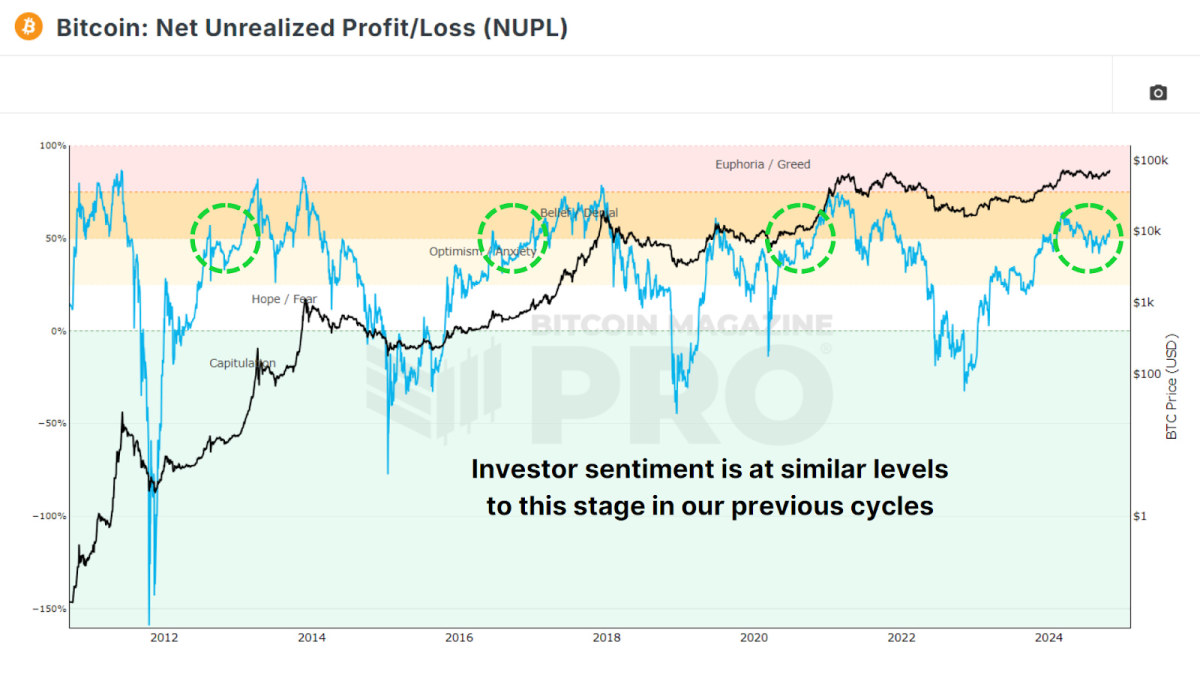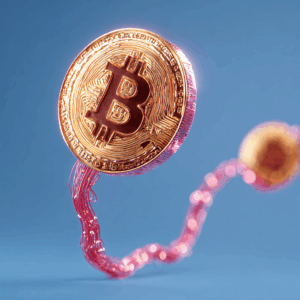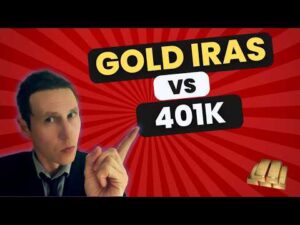
Bitcoin has a well-documented history of following a structured four-year cycle. With two years completed in the current cycle, investors are closely monitoring trends and market signals to gain insights into the upcoming two years. This article delves into the specifics of Bitcoin's four-year cycle, past market behaviors, and potential future scenarios.
Decoding the 4-Year Cycle
The four-year cycle of Bitcoin is significantly impacted by the halving events that occur at regular intervals, reducing the block reward miners receive by 50% every four years. This reduction in rewards diminishes the influx of new Bitcoin into the market, often triggering supply-demand dynamics that can drive prices upwards.
This phenomenon can be vividly illustrated through the Stock-to-Flow Model, which evaluates the existing BTC supply against its inflation rate, and establishes a 'fair-value' benchmark based on comparable tangible assets like Gold and Silver.
Presently, we find ourselves midway through this cycle, indicating the potential onset of a phase marked by exponential growth as the customary one-year catch-up phase post-halving unfolds.
Reflecting on 2022
Two years ago, Bitcoin encountered a significant downturn amidst a series of corporate collapses. November 2022 witnessed the downfall of FTX, as rumors of insolvency triggered substantial sell-offs. This chain reaction was harsh, leading to the demise of other crypto institutions such as BlockFi, 3AC, Celsius, and Voyager Digital.
Bitcoin's price plummeted from approximately $20,000 to $15,000, echoing the widespread market anxiety and leaving investors uncertain about Bitcoin's viability. Yet, true to its nature, Bitcoin rebounded, surging fivefold from the 2022 lows. Investors who stood firm during the upheaval were duly rewarded, reinforcing the notion that Bitcoin's cyclical behavior endures.

Consistent Investor Sentiment
In tandem with price trends, investor sentiment tends to follow a predictable cycle in each phase. Examination of the Net Unrealized Profit and Loss (NUPL) metric, which reveals unrealized gains and losses in the market, indicates that emotions such as euphoria, fear, and capitulation recur consistently. Bitcoin investors typically navigate intense feelings of fear or pessimism during bear markets, only to transition back to optimism and euphoria as prices recover and ascend. Currently, we are witnessing a return to the 'Belief' stage following the initial cycle surge and subsequent consolidation.
Impact of the Global Liquidity Cycle
The cyclical liquidity of the global money supply, as reflected in Global M2 YoY vs BTC, also aligns with a four-year pattern. Notably, M2 liquidity bottomed out in 2015 and 2018, coinciding with Bitcoin's price lows. In 2022, M2 once again reached a trough, perfectly synchronized with Bitcoin's bear market bottom. Post periods of economic downturn, there is a trend of fiscal expansion by central banks and governments globally, fostering conducive conditions for Bitcoin's price appreciation.
Recognizing Historical Trends
Analysis of past price movements indicates that Bitcoin's current trajectory closely mirrors previous cycles. Following lows, Bitcoin typically takes around 24-26 months to surpass prior highs. In the previous cycle, this duration was 26 months, while the ongoing cycle shows a comparable upward trend after 24 months. Historically, Bitcoin has peaked approximately 35 months post-lows. If this pattern persists, we can anticipate significant price surges until October 2025, followed by a potential onset of another bear market.
Subsequent to the projected peak, historical data suggests Bitcoin might enter a bear phase in 2026, lasting around a year until the commencement of the next cycle. While these trends are not definitive, they offer a roadmap that Bitcoin has adhered to in past cycles, providing a potential framework for investors to navigate the market effectively.
Final Thoughts
Despite the challenges encountered, Bitcoin's four-year cycle has demonstrated resilience, primarily driven by its supply schedule, global liquidity trends, and investor behavior. Consequently, the four-year cycle serves as a valuable guideline for investors to decipher potential price movements in Bitcoin and forms the basis for the remainder of this cycle. However, relying solely on this cycle could be limiting. By incorporating on-chain metrics, liquidity assessments, and real-time investor sentiment, data-centric strategies can empower investors to adapt adeptly to evolving market conditions.
For a comprehensive exploration of this subject, consider watching a recent YouTube video: The 4-Year Bitcoin Cycle – Half Way Done?

Frequently Asked Questions
What tax is gold subject in an IRA
The fair value of gold sold to determines the price at which tax is due. When you purchase gold, you don't have to pay any taxes. It's not considered income. If you decide to sell it later, there will be a taxable gain if its price rises.
You can use gold as collateral to secure loans. When you borrow against your assets, lenders try to find the highest return possible. This often means selling gold. The lender might not do this. They may keep it. They might decide to sell it. You lose potential profits in either case.
In order to avoid losing your money, only lend against your precious metal if you plan to use it to secure other collateral. It is better to leave it alone.
How Much of Your IRA Should Include Precious Metals?
You should remember that precious metals are not only for the wealthy. You don’t need to have a lot of money to invest. There are many ways that you can make money with gold and silver investments, even if you don't have much money.
You could also consider buying physical coins like bullion bars, rounds or bullion bars. Also, you could buy shares in companies producing precious metals. Or, you might want to take advantage of an IRA rollover program offered by your retirement plan provider.
You'll still get the benefit of precious metals no matter which country you live in. These metals are not stocks, but they can still provide long-term growth.
Their prices rise with time, which is a different to traditional investments. If you decide to sell your investment, you will likely make more than with traditional investments.
Can I buy gold with my self-directed IRA?
Although you can buy gold using your self-directed IRA account, you will need to open an account at a brokerage like TD Ameritrade. Transfer funds from an existing retirement account are also possible.
The IRS allows individuals contributing up to $5.500 each ($6,500 if married, filing jointly) into a traditional IRA. Individuals can contribute as much as $1,000 per year ($2,000 if married filing jointly) to a Roth IRA.
If you do decide to invest in gold, you'll want to consider purchasing physical bullion rather than investing in futures contracts. Futures contracts are financial instruments based on the price of gold. They allow you to speculate on future prices without owning the metal itself. But, physical bullion is real bars of gold or silver that you can hold in one's hand.
Statistics
- (Basically, if your GDP grows by 2%, you need miners to dig 2% more gold out of the ground every year to keep prices steady.) (smartasset.com)
- This is a 15% margin that has shown no stable direction of growth but fluctuates seemingly at random. (smartasset.com)
- Indeed, several financial advisers interviewed for this article suggest you invest 5 to 15 percent of your portfolio in gold, just in case. (aarp.org)
- If you accidentally make an improper transaction, the IRS will disallow it and count it as a withdrawal, so you would owe income tax on the item's value and, if you are younger than 59 ½, an additional 10% early withdrawal penalty. (forbes.com)
- The price of gold jumped 131 percent from late 2007 to September 2011, when it hit a high of $1,921 an ounce, according to the World Gold Council. (aarp.org)
External Links
investopedia.com
cftc.gov
wsj.com
- Saddam Hussein's InvasionHelped Uncage a Bear in 1990 – WSJ
- Want to Keep Gold in Your IRA at Home? It's Not Exactly Legal – WSJ
forbes.com
- Gold IRA – Add Sparkle to Your Retirement Nest Egg
- Understanding China's Evergrande Crisis – Forbes Advisor
How To
How to Buy Physical Gold in An IRA
The most obvious way to invest in gold is by buying shares from companies producing gold. However, this method comes with many risks because there's no guarantee that these companies will continue to survive. If they survive, there's still the risk of losing money due to fluctuations in the price of gold.
You can also buy gold directly. This means that you will need to open an account at a bank, bullion seller online, or purchase gold from a trusted seller. This option is convenient because you can access your gold when it's low and doesn't require you to deal with stock brokers. It's also easy to see how many gold you have. You'll get a receipt showing exactly what you paid, so you'll know if any taxes were missed. You're also less susceptible to theft than investing with stocks.
However, there are some disadvantages too. You won't be able to benefit from investment funds or interest rates offered by banks. Also, you won't be able to diversify your holdings – you're stuck with whatever you bought. Finally, the tax man might ask questions about where you've put your gold!
If you'd like to learn more about buying gold in an IRA, visit the website of BullionVault.com today!
—————————————————————————————————————————————————————————————-
By: Matt Crosby
Title: Understanding the Midpoint of the 4-Year Bitcoin Cycle
Sourced From: bitcoinmagazine.com/markets/half-way-through-the-4-year-bitcoin-cycle
Published Date: Fri, 08 Nov 2024 19:02:07 GMT















